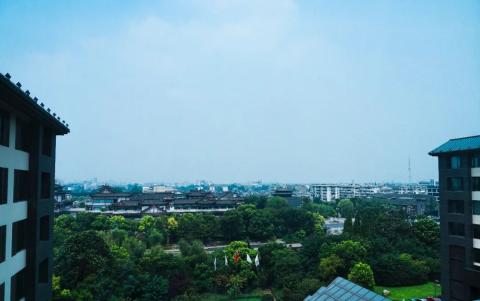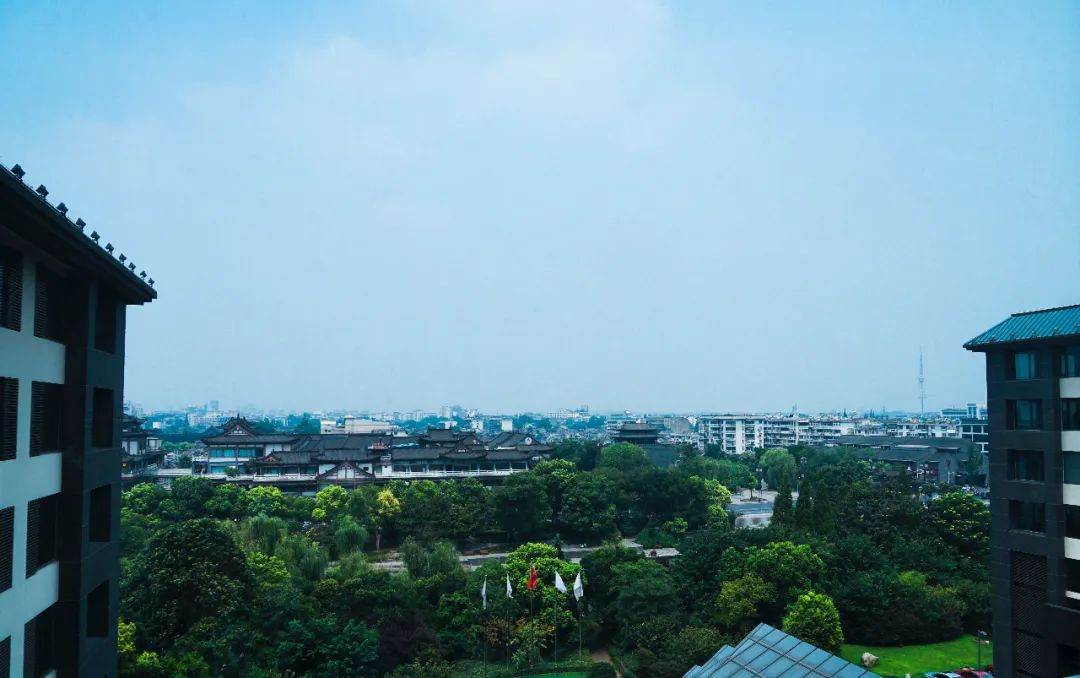
If you want to understand a city, you must choose your time, come here, find a suitable place to live, walk more in this city, see more, and discover the charm of this city. Yangzhou is not Guilin Yangshuo The kind of city that conquers you with the charm of its mountains and rivers, nor the city that relies on the snow-covered plateau Lhasa to attract you to stop, nor the city with a highly developed business atmosphere like Shanghai and Guangzhou. Yangzhou is a very ordinary city, it is a hidden place of China. A city with thousands of years of civilization, this city has its charm, it depends on how you discover it.

Yangzhou, formerly known as Guangling, Jiangdu, Weiyang. Located in the middle of Jiangsu Province, at the intersection of the Yangtze River and the Beijing-Hangzhou Grand Canal, due to its special geographical location, Yangzhou has experienced almost universal prosperity in ancient China and has the reputation of being the first canal city in China.
According to research, the history of Yangzhou's founding can be traced back to 486 BC. The Yangzhou section of China's Beijing-Hangzhou Grand Canal was selected into the World Heritage List, and Yangzhou was included in one of the cities applying for World Heritage along the China Maritime Silk Road.



Yangzhou is a city made of water. Born because of the canal, it thrives because of the canal. There has never been a city as closely connected to water as Yangzhou. When we follow the thousands of years of flowing water and explore the secrets of the city, the Yangzhou dream in our hearts seems to be slowly flowing...


When you come to the bank of Slender West Lake and see the rippling blue waves of the lake, you will think of Du Mu's memory of the past, "On a moonlit night under the Twenty-Four Bridges, where can a beautiful woman teach me to play the flute?"


When you are boating on the lake, soft waves ripple,
It reminds me of Su Dongpo's sigh: "Half a ditch of spring water and a city full of flowers, mist and rain darken thousands of houses."
When you take a leisurely stroll and find red medicine,
Then I remembered Jiang Kui singing in a low voice, "Reading the red medicine by the bridge, who will you know every year?"
When these poems are revealed inadvertently in the heart and linger in the ears,
You just suddenly realized: Yangzhou dream is so poetic!



From a distance, I can see Wuting Bridge and Twenty-four Bridge lying quietly on the blue waves, hidden among the spring flowers and willows. Just looking from a distance, my heart seems to have entered the gentle and lingering dream of Yangzhou.


An ancient book says: "Hangzhou is famous for its lakes and mountains, Suzhou is famous for its markets, and Yangzhou is famous for its gardens and pavilions. The three are in the same tripod system, regardless of the Xuan Yu." Walking into the garden, the scenery is different every step of the way. The off-season red maple leaves, green bamboos, hydrangeas and wisteria flowers are intertwined and colorful.
There are also Taihu stones with various shapes and holes, which are novel in shape. There are so many rockeries that you may get lost in them, but when you reach a certain place, you may find a unique surprise.





The flower windows are unique and picturesque, known as "the best window in the world". Each brick and tile has a long ancient charm, which makes people linger. Smokey willows, clear water, pavilions and pavilions outline a poetic Yangzhou with picturesque features.




Every city has its own pedestrian street, such as Hubu Lane and Chuhehan Street in Wuhan, Tianzifang in Shanghai, Tongluogu Lane in Beijing, West Street in Yangshuo, and Dongguan Street in Yangzhou.
When you come to Yangzhou, you must visit Dongguan Street and feel the elegance of old Yangzhou. The shops along the street offer everything from jade carvings and lacquerware to delicacies and specialties. The essence of traditional culture and the original flavor of history continue to be passed down here.
"Tang, Song, Yuan, Ming and Qing Dynasties, from the past to the present."
There are many deep mansions and courtyards from the Ming and Qing Dynasties on both sides of the street, which look sophisticated and simple.


 "In the morning, the skin is covered with water, and in the evening, the water is contained in the skin" is a summary of the comfortable and slow life in old Yangzhou. The water wrapped in the skin is the soup dumpling, which refers to the morning tea culture of Yangzhou; the water wrapped in the skin is the bath, which refers to the hot spring culture of Yangzhou.
"In the morning, the skin is covered with water, and in the evening, the water is contained in the skin" is a summary of the comfortable and slow life in old Yangzhou. The water wrapped in the skin is the soup dumpling, which refers to the morning tea culture of Yangzhou; the water wrapped in the skin is the bath, which refers to the hot spring culture of Yangzhou.
After you are tired from shopping , you can experience a "water foreskin" experience, which is to take a bath in Yangzhou. Wash away the fatigue and fatigue of the day in the comfortable leisure of clear blue water and mist. This is an old Yangzhou traditional skill that has entered China's intangible cultural heritage. If you can sleep while taking a bath, you will be extremely relaxed and comfortable.











 The Yangzhou section of the ancient canal is the oldest section of the entire canal. The current canal in Yangzhou is mostly consistent with the ancient Hangou route more than 2,000 years ago. It is completely consistent with the canal dug by Emperor Yang of the Sui Dynasty. It is 125 kilometers long from Guazhou to Baoying. Among them, the Yangzhou city section of the ancient canal is about 30 kilometers long from Guazhou to Wantou, forming the famous "Yangzhou Three Bays".
The Yangzhou section of the ancient canal is the oldest section of the entire canal. The current canal in Yangzhou is mostly consistent with the ancient Hangou route more than 2,000 years ago. It is completely consistent with the canal dug by Emperor Yang of the Sui Dynasty. It is 125 kilometers long from Guazhou to Baoying. Among them, the Yangzhou city section of the ancient canal is about 30 kilometers long from Guazhou to Wantou, forming the famous "Yangzhou Three Bays".





In the morning, I got up early and rushed to Quchun Tea House, lined up in a long line, and tasted the most authentic Yangzhou morning tea. Order a pot of Kui Longzhu, a basket of assorted dim sum including Shaomai, Thousand Layer Oil Cake, Soup Dumplings, and Steamed Dumplings, and listen to a Yangzhou commentary... A morning tea trip for Yangzhou people is complete.
"Yangzhou's Xiaolong dim sum is really good: I left Yangzhou and visited seven or eight places, large and small, but I have never had such good dim sum; this is actually worth remembering."
——Zhu Ziqing "I am from Yangzhou"






 After having morning tea, we walked into the ancient alleys and old streets where few tourists set foot, and the strong smell of fireworks hit our faces.
After having morning tea, we walked into the ancient alleys and old streets where few tourists set foot, and the strong smell of fireworks hit our faces.
 The ancestral hall of Shi Kefa, a famous general who fought against the Qing Dynasty in the late Ming Dynasty, is located along the moat, close to the Qianlong Imperial Wharf. It is also good to visit and learn about the history while walking along the river.
The ancestral hall of Shi Kefa, a famous general who fought against the Qing Dynasty in the late Ming Dynasty, is located along the moat, close to the Qianlong Imperial Wharf. It is also good to visit and learn about the history while walking along the river.




 When you come to Yangzhou, you must visit Zhu Ziqing’s former residence. After following the navigation and walking around, I came to a small alley and finally arrived at this place as I wished.
When you come to Yangzhou, you must visit Zhu Ziqing’s former residence. After following the navigation and walking around, I came to a small alley and finally arrived at this place as I wished.
In a downtown area, surrounded by tall buildings and busy traffic, in such a prosperous place, I actually saw an old-style courtyard with blue bricks and black tiles, and Zhu Ziqing's former residence is in this small courtyard.
Zhu Ziqing's former residence is not very big as a whole. After all, it is Mr. Zhu's own residence. But his elegance and simplicity are everywhere revealed, making people miss him. It also reminded me of your husband’s conduct as a person, and his masterpieces are also so elegant.



Yangzhou is a city slowly stewed with time
no matter when you go
Going a thousand years ago and going a thousand years later
can be found
The Yangzhou dream in your heart
